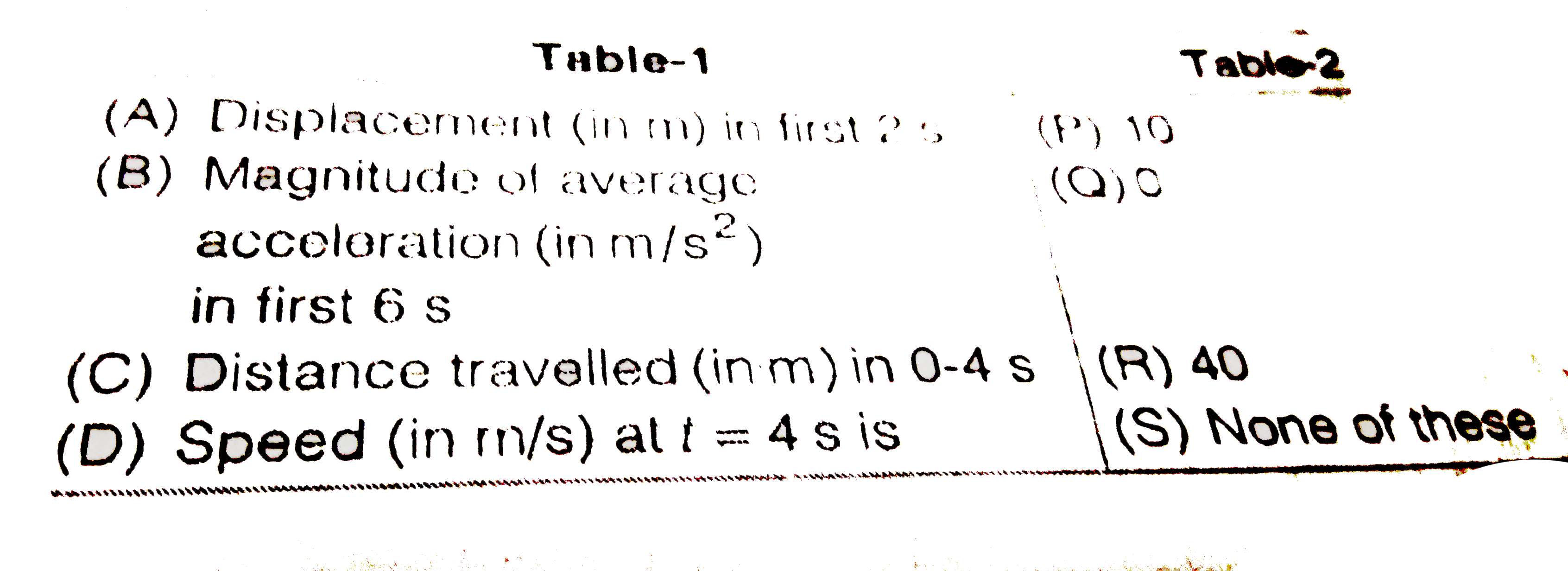A ball of mass 1 kg is projected with 10ms−1 from the top of a tower of height 20 m. What is its speed when it is at vertical distance of 10 m below point of projection? (g=10ms−2)
To solve the problem step by step, we will use the principles of work and energy.
Step 1: Identify the given data
- Mass of the ball (m) = 1 kg
- Initial speed (u) = 10 m/s
- Height of the tower (h) = 20 m
- Distance below the point of projection (d) = 10 m
- Acceleration due to gravity (g) = 10 m/s²
Step 2: Determine the height from which the ball is falling
Since the ball is projected from the top of the tower and we want to find its speed when it is 10 m below the point of projection, the height from which the ball is falling is:
- Height above the ground when the ball is 10 m below the projection point = 20 m - 10 m = 10 m
Step 3: Calculate the work done by gravity
The work done by gravity (W) when the ball falls a vertical distance of 10 m can be calculated using the formula:
W=m⋅g⋅h
Where:
- h = 10 m (the vertical distance fallen)
Substituting the values:
W=1kg⋅10m/s2⋅10m=100J
Step 4: Relate work done to change in kinetic energy
The work done by gravity is equal to the change in kinetic energy (ΔK):
W=ΔK=Kf−Ki
Where:
- Kf=12mV2 (final kinetic energy)
- Ki=12mu2 (initial kinetic energy)
Step 5: Substitute the kinetic energy expressions
Substituting the expressions for kinetic energy into the work-energy equation:
100J=12mV2−12mu2
Step 6: Simplify the equation
Since the mass (m) is 1 kg, we can simplify:
100=12(V2−u2)
Substituting u=10m/s:
100=12(V2−102)
100=12(V2−100)
Step 7: Solve for V²
Multiply both sides by 2:
200=V2−100
Now, add 100 to both sides:
V2=200+100
V2=300
Step 8: Calculate V
Taking the square root of both sides:
V=√300
V≈17.32m/s
Final Answer
The speed of the ball when it is at a vertical distance of 10 m below the point of projection is approximately 17.32 m/s.
---
- Mass of the ball (m) = 1 kg
- Initial speed (u) = 10 m/s
- Height of the tower (h) = 20 m
- Distance below the point of projection (d) = 10 m
- Acceleration due to gravity (g) = 10 m/s²
Since the ball is projected from the top of the tower and we want to find its speed when it is 10 m below the point of projection, the height from which the ball is falling is:
- Height above the ground when the ball is 10 m below the projection point = 20 m - 10 m = 10 m
The work done by gravity (W) when the ball falls a vertical distance of 10 m can be calculated using the formula:
W=m⋅g⋅h
Where:
- h = 10 m (the vertical distance fallen)
W=1kg⋅10m/s2⋅10m=100J
The work done by gravity is equal to the change in kinetic energy (ΔK):
W=ΔK=Kf−Ki
Where:
- Kf=12mV2 (final kinetic energy)
- Ki=12mu2 (initial kinetic energy)
Substituting the expressions for kinetic energy into the work-energy equation:
100J=12mV2−12mu2
Since the mass (m) is 1 kg, we can simplify:
100=12(V2−u2)
Substituting u=10m/s:
100=12(V2−102)
100=12(V2−100)
Multiply both sides by 2:
200=V2−100
Now, add 100 to both sides:
V2=200+100
V2=300
Taking the square root of both sides:
V=√300
V≈17.32m/s
The speed of the ball when it is at a vertical distance of 10 m below the point of projection is approximately 17.32 m/s.
Similar Questions
A ball of mass 1 kg is projected with 10ms−1 froom the top of a toer of height 20 m. What is its speed when it is at vertical distance of 10 m below point of projection? (g=10ms−2)
View SolutionA stone is dropped from the top of a tower of height 125 m. The distance travelled by it during last second of its fall is (g=10ms−2)
View SolutionA particle of mass 50 g is projected horizontally from the top of a tower of height 50 m with a velocity 20m/s. If g=10m/s2, then find the :-
View SolutionA ball of mas 2gm is thrown vertically upwards with a speed of 30m/s from a tower of height 35m. (Given g=10m/s2)
 View Solution
View SolutionA stone is thrown with a speed of 10ms−1 at an angle of projection 60∘. Find its height above the point of projection when it is at a horizontal distance of 3m from the thrower ? (Take g=10ms−2)
View SolutionA stone is thrown with a speed of 10ms−1 at an angle of projection 60∘. Find its height above the point of projection when it is at a horizontal distance of 3m from the thrower ? (Take g=10ms−2)
View SolutionA body is projected horizontally from the top of a tower with a velocity of 30 m/s. The velocity of the body 4 seconds after projection is (g = 10ms−2)
View SolutionA stone is dropped from the top of a tower of height h=60m. Simultaneously another stone is projected vertically upwards from the foot of the tower. They meet at a height 2h3 from the ground level. The initial velocity of the stone projected upwards is (g=10ms−2)
View SolutionA bullet is projected upwards from the top of a tower of height 90 m with the velocity 30ms−1 making an angle 30∘ with the horizontal. Find the time taken by it to reach the ground is (g=10ms−2)
View SolutionA body is projected horizontally from the top of a tower with a velocity of 20 m/s. After what time the vertical component of velocity is four times the horizontal component of velocity ? (g = 10m/s2)
View Solution

